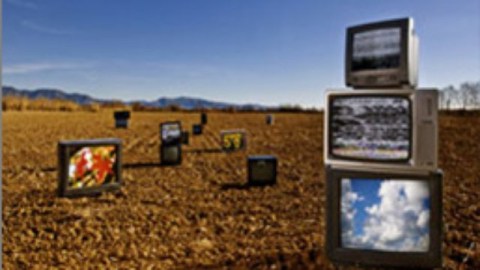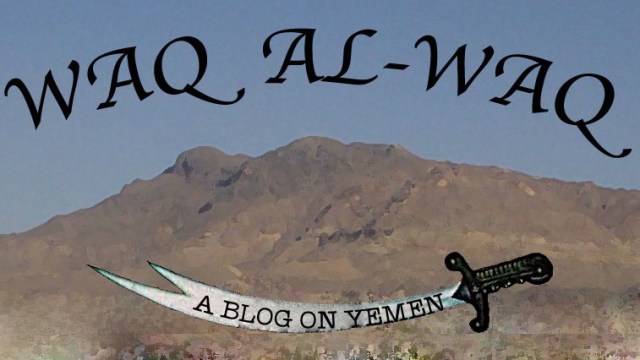AAAS Panel Reflects Tensions Between Climate Scientists and Journalists

At the AAAS meetings last month, a panel focused on the relationship between journalists and climate scientists provoked a testy exchange. As Bud Ward at the Yale Forum on Climate Change and the Media summarized, panelist Elizabeth Shogren of NPR News told gathered scientists that “You haven’t made your case yet” to policymakers and the public generally. Fellow panelist and MIT scientist Kerry Emanual replied ““No. You haven’t,” made the case, referring to the media generally.
The relationship between scientists and journalists is one of the major areas of focus in the course I am teaching this semester on “Science, the Environment, and the Media.” Simone Lewis-Koskinen along with several other students from the course attended the panel. She offers a summary and several thoughts in a guest post today.–Matthew Nisbet
In February, the Science and Society symposium series at the American Association for the Advancement of Science 2011 annual meeting hosted a panel exploring the “epochal transformation” of science journalism as represented by the climate change debate. The discussion featured practicing and former journalists sharing their insights on the changing media landscape. The panel included:
Media landscape
The evolution of popular media has and continues to influence how science is communicated and perceived within the public sphere. The proliferation of media outlets, notably web based resources, has worked to both limit the capacity of traditional media groups while demanding faster, more comprehensive coverage. This paradoxical shift has opened the door for new and specialized information pathways beyond the traditional media strategies, particularly within the science community. Andrew Revkin refers to the changing role of traditional science media as a “shrinking wedge of a growing pie of science communication” in his post on the panel, reflecting on the palpable tension between scientists and journalist over global warming. Increasingly, scientists themselves are becoming primary sources of information, essentially reducing the need for journalists as intermediary translators.
The climate movement continues to innovate and diversify communication platforms, creating direct channels between scientists and the user. Yet public support of climate science continues to wane despite consensus among scientists that anthropogenic emissions impact our planet. Recent polling suggests belief in global warming remains below 2008 levels with many Americans highly divided on claims that scientists are manipulating climate research (Borick 2011). Given the increase in access to and information from scientists, why the disparity between public opinion and scientific consensus?
Many journalists acknowledge the significant role the media has played in the evolution of public opinion as both advocate and denier of climate change. At the AAAS panel, Elizabeth Shogren, veteran reporter for NPR, pointed to the over saturation of policy oriented climate stories that underscore uncertainty and political motives rather than champion the science. Yet the blame game goes both ways. While journalists admit they are subject to personal bias and influence, so to are scientists subject to personal ideologies and motivations that shape how they communicate about the problem and interpret climate politics.
Regardless of whether the increase in public disbelief is a function of poor science or poor communication, both scientists and journalists on the panel agreed on the importance of providing accurate, relevant coverage in pursuit of the greater ‘climate truth.’
How then can journalists and scientists ‘weather the storm’ of climate coverage and navigate mutually beneficial communication strategies? At the AAAS panel, scientists and journalists argued we must adopt an integrated approach that facilitates dialogue, emphasizes truth and rewards cooperation in order to best shape and influence public opinion and policy choices.
Forging partnerships between media and scientists
Increasingly, more and more discussion is devoted to what a media-science partnership would and should look like. Effort must be made to combat incongruities between the groups to facilitate cooperation in pursuit of shared goals. Popular culture within the scientific community has traditionally fostered a sense of skepticism toward journalists, preventing many scientists from reaching out to their media counterparts or adopting outreach strategies of their own. Successful communication models must challenge negative perceptions and facilitate the flow of information by breaching the divide between scientist, advocate, and journalist.
Cooperative initiatives are largely contingent on open channels of communication, holding both scientists and journalists accountable for their work. Blogs are widely heralded as the next generation medium at the intersection between popular science and popular media. Blogs provide discussion platforms to engage the audience while connecting users. This dynamic interaction draws upon the strengths of both science and media to uphold the scientific integrity while attracting diverse, broad audiences to the debate.
The evolution of media will simultaneously diversify the role of journalists while encouraging scientists to become active communicators. Both developments require journalists and scientists to adopt complementary practices to capitalize on the strengths of the other in order to provide effective, scientifically sound, politically relevant science coverage. Through concerted efforts, journalists and scientists can work together to successful and accurately advance the climate debate.
–Guest post by Simone Lewis-Koskinen, a Masters candidate in the Environmental Science program at American University. Prior to attending AU, she received a BS in Marine Biology and a BA in French Language and Literature from the University of Maryland, College Park.
This post is part of the course “Science, Environment, and the Media” taught by Professor Matthew Nisbet in the School of Communication at American. See also other posts on the climate change debate by Ms. Lewis-Koskinen and members of her project team.
See Also:
Bud Ward: Differences Distinguishing Science and Journalism
Andrew Revkin: Do Fights Over Climate Communication Reflect the End of Scientism?
Borick, C., Lachapelle, E., Rabe, B. 2011. Climate Compared: Public Opinion on Climate Change in the Unites States & Canada. The Center for Local, State, and Urban Policy & the Muhlenberg College Institute of Public Opinion





